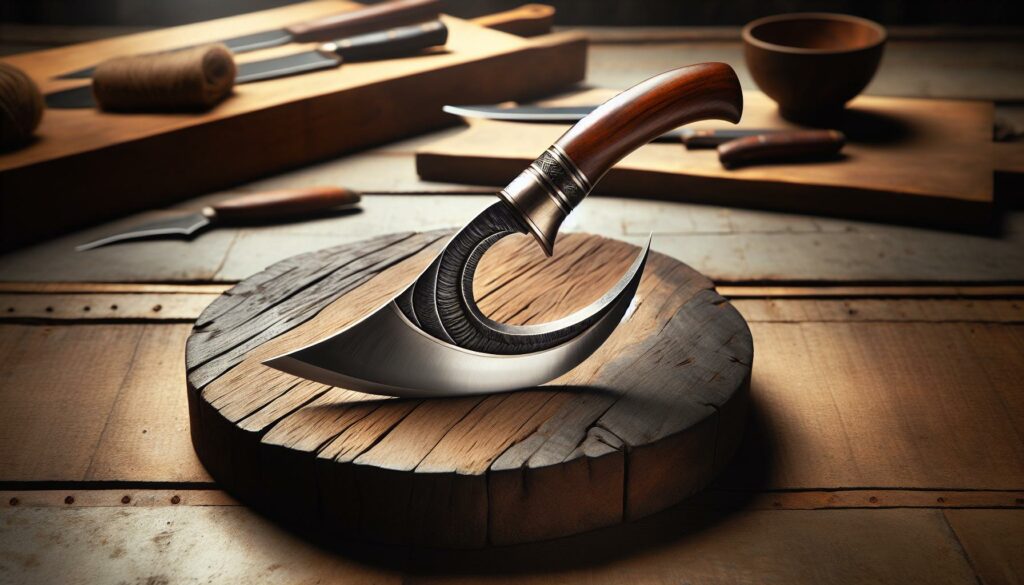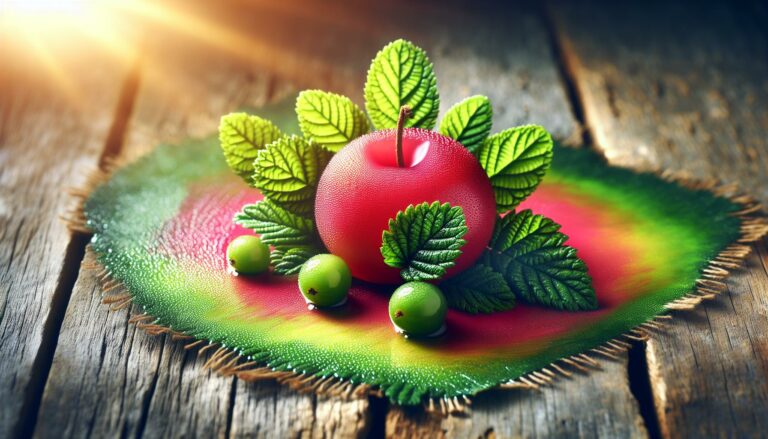Ulu has always fascinated me as a symbol of Inuit craftsmanship and tradition. This versatile tool, with its distinctive curved blade, has been an essential part of Arctic life for centuries. Whether used for cutting, skinning, or even as a weapon, the ulu’s design reflects both functionality and cultural significance.

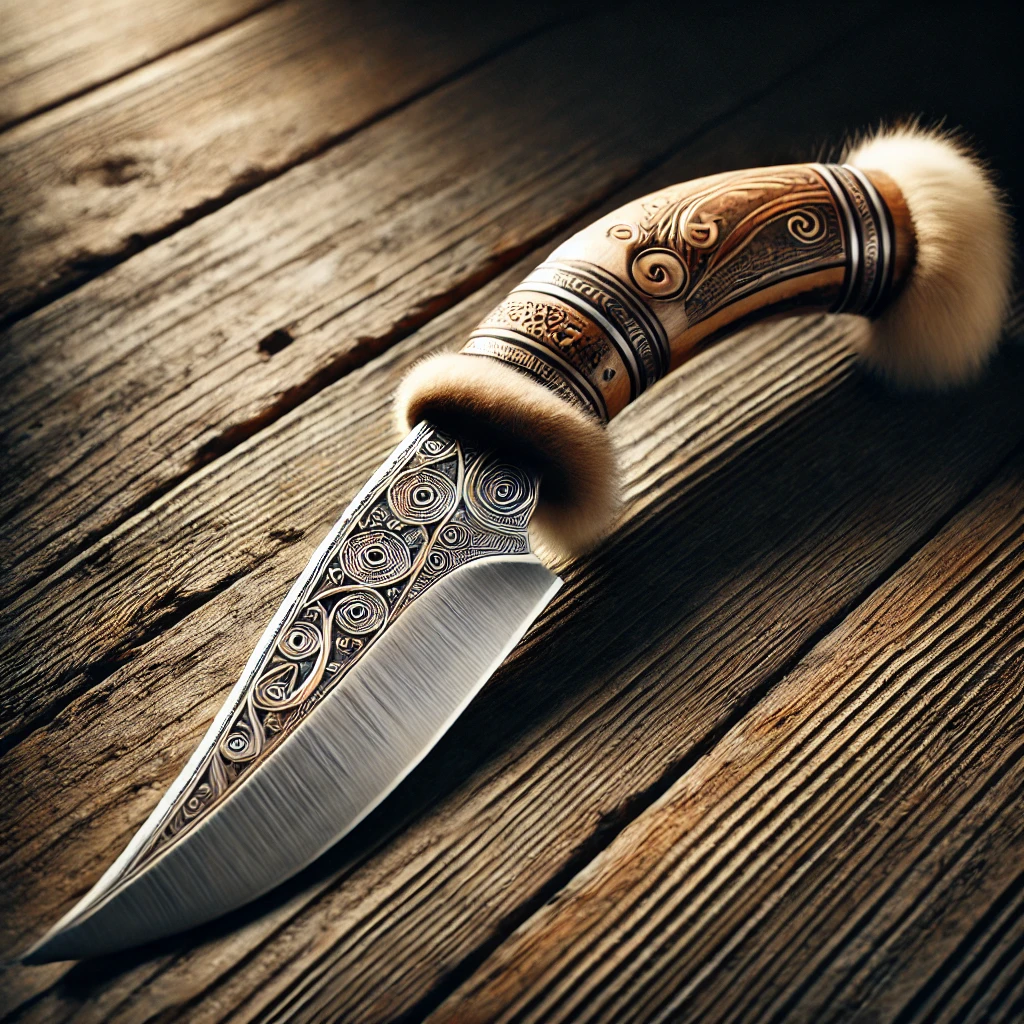
Delving into the history of the ulu reveals more than just its practical applications. It’s a testament to the ingenuity and resilience of the communities that crafted it. Today, the ulu has transcended its traditional roots, finding a place in modern kitchens and design. By blending heritage with contemporary innovation, the ulu continues to inspire and educate those who appreciate its timeless elegance.
What Is An Ulu?
I use an ulu, a traditional Inuit cutting tool with a curved blade and a central handle. Its design allows efficient chopping, slicing, and skinning, making it essential in Arctic environments. Ulus are typically made from materials like bone, ivory, or stone for the blade and wood or antler for the handle. The blade curves upwards to facilitate precise movements, while the handle, usually between 20 to 30 centimetres long, provides leverage and control.

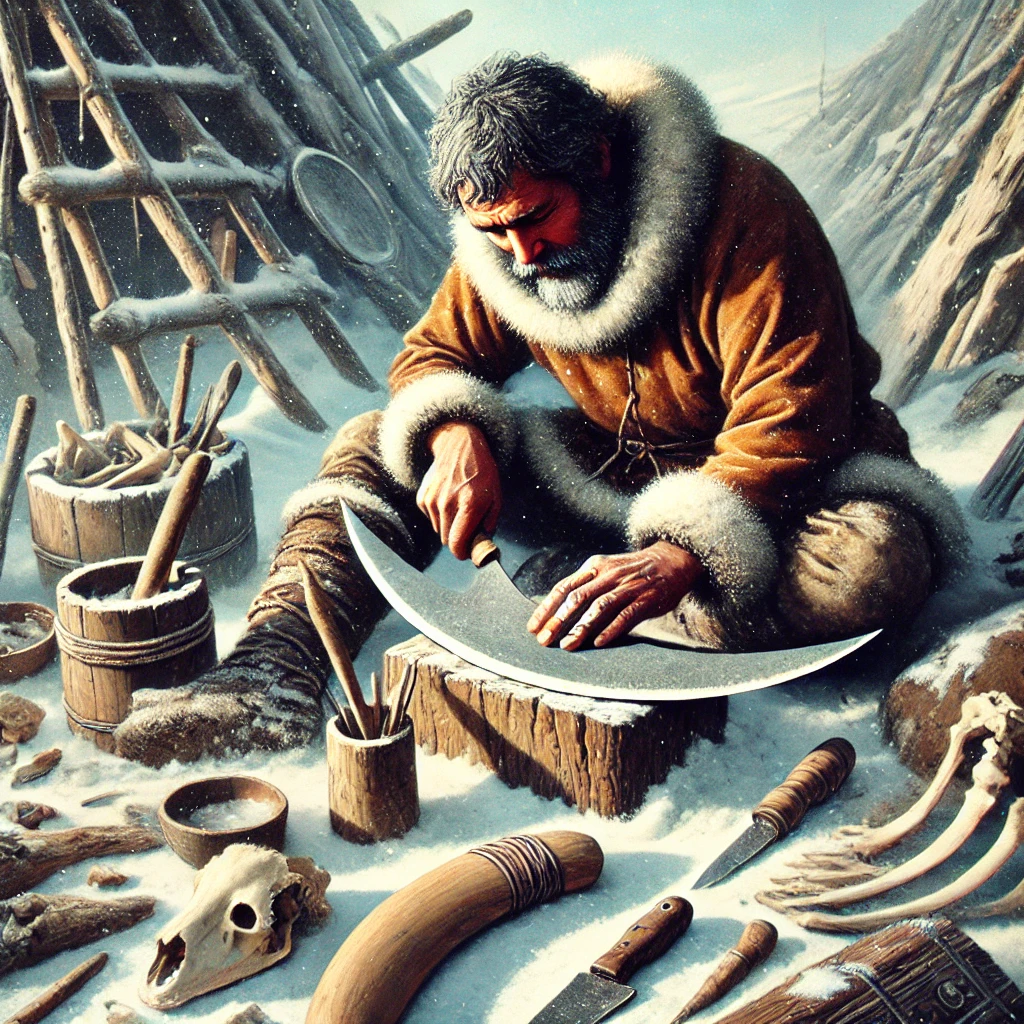
Historically, ulus were vital for preparing food and crafting materials, showcasing Inuit craftsmanship. Today, they adapt to modern kitchens and design, blending traditional functionality with contemporary aesthetics.
History And Cultural Significance
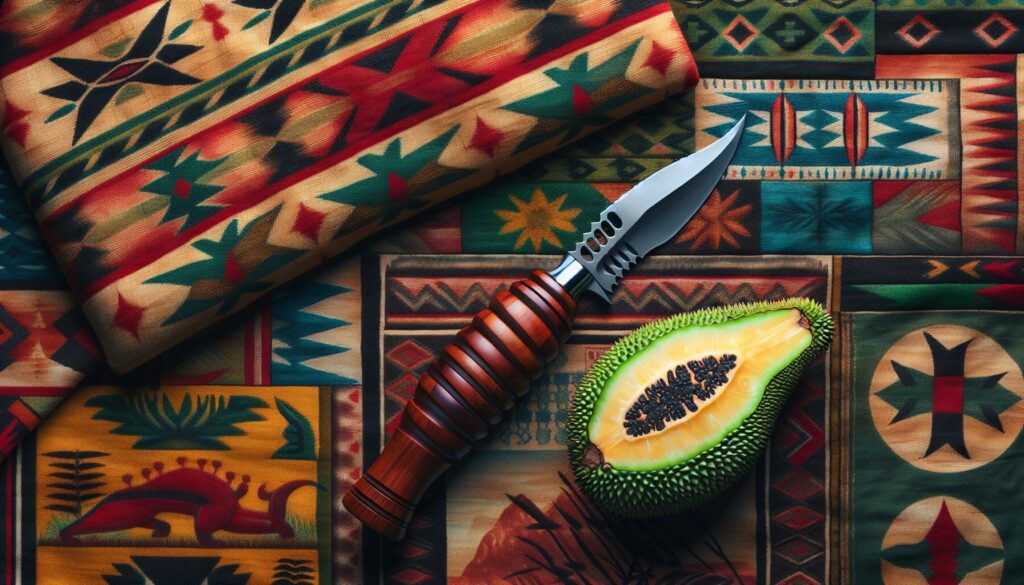
Ulu as a Breadfruit in Hawaiian Culture
In Hawaiian culture, the ulu refers to the breadfruit tree, introduced by Polynesian voyagers over a millennium ago. This tree served as one of the essential ‘canoe plants’, ensuring a sustainable food source for early settlers. A single ulu tree can produce up to 300 fruits annually, providing ample nourishment for families[^1][^2].
Ulu symbolizes abundance and the Hawaiian principle of malama ʻāina, which means caring for the land. It represents the ancestral wisdom in resource management and agricultural practices. The breadfruit tree’s ability to thrive in diverse environments underscores the ingenuity of ancient Hawaiians in cultivating and preserving vital food resources.
Ulu as an Inuit Knife
The ulu knife holds significant historical and cultural value among Inuit, Iñupiat, Yupik, and Aleut communities in the Arctic regions. Traditionally crafted from materials such as bone, ivory, or stone for the blade and wood or antler for the handle, the ulu is designed for efficiency and precision.
Historically, the ulu was an indispensable tool for women, used for various tasks including cutting, slicing, and skinning. Its unique curved blade allows for swift and controlled movements, making it ideal for preparing food and crafting clothing. The design of the ulu reflects the deep connection between the Arctic communities and their environment, showcasing their adaptation and resilience in harsh climates.
Today, the ulu continues to be a symbol of Inuit craftsmanship and cultural heritage. Modern adaptations incorporate contemporary materials and design elements, bridging traditional practices with current innovations. This evolution not only preserves the ulu’s legacy but also highlights its enduring functionality and aesthetic appeal in modern kitchens and design contexts.
[^1]: Reference 1
Design And Features
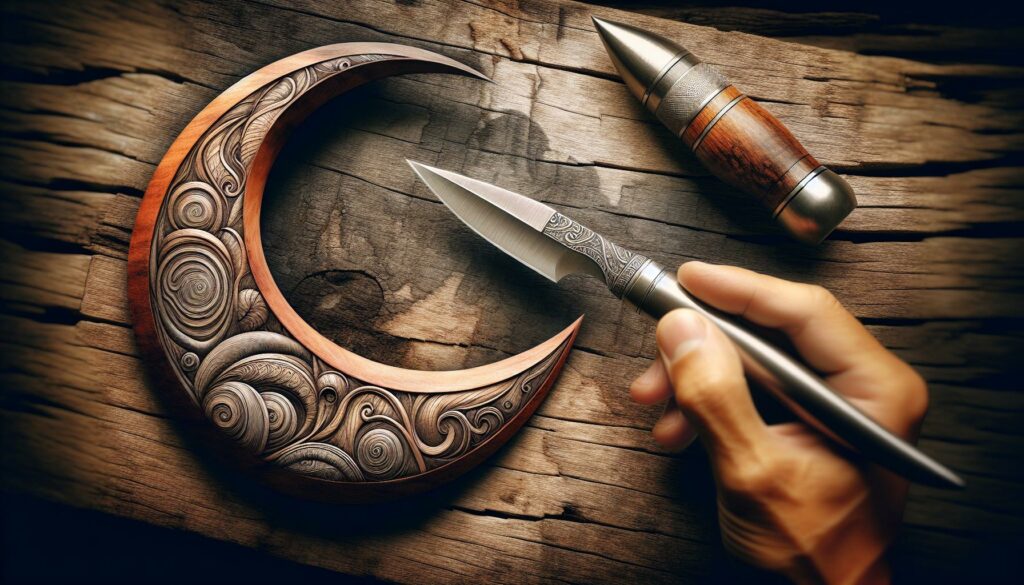
I explore the ulu’s design, which seamlessly blends functionality with cultural heritage.
Blade Shape And Materials
The ulu knife features a crescent-shaped blade that facilitates a rocking motion, enhancing cutting efficiency and precision. This curvature enables versatile movements, allowing me to slice, dice, and mince various materials effectively. Traditionally, blades were crafted from slate, copper, or bone. The Copper Inuit mined copper for blades, while whale baleen and ivory served as alternatives when metals were scarce. With advancements in metalworking, blades transitioned to iron and high-carbon steel, prized for durability and edge retention. Today, most ulus use stainless steel for its corrosion resistance and ease of maintenance.
Handle Construction
I find that ulu handles are typically made from wood or antler, providing a sturdy and ergonomic grip. The handle design ensures balance and control during use, allowing for effective maneuverability. Traditional construction methods involve shaping and attaching the handle securely to the blade, often using natural adhesives or bindings. Modern ulus may incorporate synthetic materials for improved durability and comfort, while still honouring traditional aesthetic elements.
Uses And Practical Applications
Traditional Uses
- Food Preparation
The ulu knife remains central to Indigenous Arctic communities. It facilitates filleting fish, butchering game, and processing marine mammals. The curved blade cuts through tough skins and flesh efficiently.
- Preparing Animal Hides
The ulu knife is essential for preparing animal hides used in clothing and shelter. Its rocking motion scrapes and thins hides, making them pliable and durable for Arctic garments.
- Hunting and Skinning
Hunters rely on the ulu knife for field dressing game, skinning, and butchering. Its design ensures precision and ease in handling various hunting tasks.
Contemporary Applications
- Modern Kitchen Use
The ulu knife has found a place in contemporary kitchens. Its versatile blade is ideal for chopping vegetables, slicing meat, and other kitchen tasks. Chefs appreciate its ergonomic design and cutting efficiency.
- Artisan Crafting
Artisans use the ulu knife for crafting and carving. Its sharp blade allows for intricate designs in wood, bone, and other materials. This application honours traditional craftsmanship while embracing modern creativity.
- Survival and Outdoor Activities
The ulu knife serves as a reliable tool for survival and outdoor enthusiasts. It performs tasks such as chopping wood, preparing food, and crafting tools. Its sturdy construction ensures durability in demanding environments.
Industrial and Commercial Uses
- Butchery and Meat Processing
In butchery, the ulu knife enhances efficiency in meat processing. Its design reduces fatigue, allowing butchers to work longer with precision. This leads to higher productivity and better quality cuts.
- Textile and Leather Industries
The ulu knife aids in the textile and leather industries by providing precise cutting and shaping of materials. Its versatile blade adapts to various thicknesses, ensuring consistent results in production.
- Manufacturing and Construction
Manufacturers and construction workers utilize the ulu knife for cutting materials such as foam, insulation, and fabric. Its robust blade handles repetitive tasks, contributing to streamlined workflows and improved accuracy.
Choosing The Right Ulu
Selecting the appropriate ulu involves evaluating several critical factors to ensure it meets your specific needs.
Purpose
Determine the primary use of the ulu. Whether for traditional purposes, kitchen tasks, or outdoor activities, the function dictates the design and materials suitable for your ulu.
- Traditional Use: Focus on authenticity and cultural significance.
- Kitchen Utility: Prioritise versatility and ease of handling.
- Outdoor Activities: Emphasise durability and functionality in harsh conditions.
Blade Material
The blade material affects the ulu’s performance and maintenance requirements.
- Stainless Steel: Resistant to corrosion and easy to maintain, making it ideal for everyday kitchen use.
- Carbon Steel: Provides a sharper edge but requires regular maintenance to prevent rust, suitable for precise cutting tasks.
- Historical Materials: Includes slate, shale, or quartzite. These materials are less common today but offer traditional authenticity.
Handle Material
The handle ensures comfort and control during use.
- Wood: Offers a natural grip and aesthetic appeal, commonly used in traditional ulus.
- Antler: Provides strength and durability, suitable for heavy-duty tasks.
- Synthetic Materials: Modern handles may use composites for enhanced grip and longevity while maintaining traditional designs.
Size and Weight
Evaluate the ulu’s size and weight based on your intended use.
- Small Ulus: Lightweight and easy to maneuver, ideal for detailed kitchen tasks.
- Large Ulus: Heavier and more robust, suitable for outdoor and heavy-duty applications.
Design
Consider the ulu’s design features that contribute to its functionality.
- Curved Blade: Facilitates a rocking motion, enhancing cutting efficiency and precision.
- Balance and Grip: Ensures comfortable handling and reduces fatigue during extended use.
By carefully assessing these factors, you can choose an ulu that aligns with your requirements, whether preserving cultural traditions or enhancing modern culinary practices.
Maintenance And Care
Cleaning
- Handwashing: Never place an Ulu knife in a dishwasher. Use warm water for handwashing, handling the sharp edge with care.
- Materials: Clean both the blade and handle with soft, non-abrasive cloths. Avoid harsh materials that could scratch or damage surfaces.
- Drying: Thoroughly dry the blade after each use to prevent rust and corrosion. Apply a thin layer of protective oil, such as mineral or olive oil, to create a moisture barrier.
Sharpening
- Sharpening Edge: Sharpen only the beveled edge of the Ulu knife. Use a sharpening stone, 400-grit wet/dry sandpaper, or a ceramic sharpener. Apply light pressure and rotate the blade along the sharpening surface to maintain the edge.
Storage
- Protective Sheath: Store the Ulu knife in a protective sheath to shield the blade from damage and prevent accidental cuts.
- Dry Environment: Keep the knife in a dry place to minimize the risk of rust and corrosion. Avoid storing it in humid areas.
- Secure Placement: Place the Ulu knife in a secure location, away from children and pets, to ensure safety and preserve its condition.
Benefits Of Using An Ulu
Versatility
I find the ulu knife exceptionally versatile, handling tasks such as chopping vegetables, mincing herbs, slicing cheese, cutting meats, fish, and chicken, and carving wood, bone, and ivory. For example, filleting fish and butchering game showcase its precise cutting capabilities.
Efficiency and Ease of Use
The ulu’s curved, half-moon blade allows me to use a rocking motion, which enhances efficiency compared to straight-edged knives. This motion pins food against the cutting board, making it easier to handle hard ingredients.
Key Takeaways
- Cultural Significance: The ulu is a vital symbol of Inuit craftsmanship and heritage, reflecting the ingenuity and resilience of Arctic communities.
- Versatile Design: Featuring a distinctive curved blade, the ulu excels in cutting, slicing, skinning, and various culinary and crafting tasks.
- Historical Roots: Traditionally essential for food preparation and crafting, the ulu showcases the deep connection between Inuit people and their environment.
- Modern Adaptations: Today, the ulu blends traditional functionality with contemporary design, finding a place in modern kitchens and artisan crafts.
- Material Excellence: Ulus are crafted from durable materials such as stainless steel, wood, and antler, ensuring longevity and effective performance.
- Maintenance Essentials: Proper care, including handwashing, regular sharpening, and secure storage, is crucial to preserve the ulu’s functionality and heritage.
Conclusion
The ulu stands as a remarkable symbol of Inuit ingenuity and cultural heritage. Its timeless design effortlessly blends functionality with tradition, making it an essential tool in both my kitchen and outdoor adventures.
Using an ulu allows me to connect with a rich history while enjoying its versatile performance today. Whether I’m chopping vegetables or tackling survival tasks the ulu offers a unique combination of beauty and practicality that continues to inspire me.
Frequently Asked Questions
What is an ulu and why is it significant in Inuit culture?
An ulu is a traditional Inuit knife with a distinctive curved blade, primarily used by women for tasks like cutting, slicing, and skinning. It symbolizes Inuit craftsmanship and plays a crucial role in daily life, reflecting the ingenuity and resourcefulness of Arctic communities. The ulu’s design facilitates efficient movements and control, making it an indispensable tool in both traditional and modern settings.
What materials are traditionally used to make an ulu?
Traditionally, ulus are crafted using materials such as bone, ivory, or stone for the blade. The handles are typically made from wood or antler, providing a sturdy grip and balance. Modern ulus may incorporate stainless steel for the blade and synthetic materials for the handle, combining durability with traditional aesthetics.
How is an ulu used in everyday tasks?
The ulu is versatile, used for chopping vegetables, mincing herbs, slicing cheese, and cutting meats. In Indigenous Arctic communities, it is essential for filleting fish, butchering game, and preparing animal hides for clothing and shelter. Its curved blade enables a rocking motion, enhancing cutting efficiency and precision in both traditional and contemporary applications.
How has the ulu evolved in modern kitchens and design?
In modern kitchens, the ulu knife is valued for its versatility and efficiency in various cutting tasks. Contemporary designs blend traditional craftsmanship with modern materials, enhancing functionality and aesthetic appeal. Artisans use ulus for intricate designs, while outdoor enthusiasts appreciate their durability for survival tasks, ensuring the ulu remains relevant in today’s world.
What is the cultural significance of “ulu” in Hawaiian culture?
In Hawaiian culture, “ulu” refers to the breadfruit tree, introduced by Polynesian voyagers. This tree is vital for sustainable food sources and embodies the Hawaiian principle of malama ʻāina, reflecting ancestral wisdom in resource management. The ulu tree plays an essential role in Hawaiian traditions, symbolising harmony with nature and the importance of sustainable living.
How do you choose the right ulu for your needs?
Choosing the right ulu involves evaluating factors such as purpose, blade material, handle material, size, weight, and design. For traditional use or kitchen utility, stainless steel blades are ideal, while carbon steel suits precision tasks. Handle materials like wood or antler offer balance and control. Assessing these elements ensures the ulu aligns with your specific needs, whether for cultural preservation or modern culinary practices.
What are the essential maintenance tips for an ulu knife?
To maintain an ulu, avoid placing it in a dishwasher. Instead, handwash with warm water and a soft, non-abrasive cloth. Thoroughly dry the blade after each use to prevent rust and corrosion, and apply a thin layer of protective oil. Sharpen only the beveled edge using appropriate tools, and store the ulu in a protective sheath in a dry environment, ensuring safety and preserving its condition.
What are the modern applications of an ulu beyond traditional uses?
Beyond traditional uses, the ulu is utilised in various industries such as butchery, textile, leather, and construction, enhancing efficiency and precision in cutting tasks. Artisans employ it for crafting intricate designs, while outdoor enthusiasts rely on its durability for survival tasks. Its adaptability makes the ulu a valuable tool in both industrial and creative fields, showcasing its enduring versatility.
Why is the ulu knife considered versatile in the kitchen?
The ulu knife’s curved, half-moon blade allows a smooth rocking motion, making chopping, slicing, and mincing tasks easier and more efficient. Its design enhances control and precision, ideal for a wide range of kitchen activities from filleting fish to preparing vegetables. This versatility, combined with its ergonomic handle, makes the ulu a preferred choice for both professional chefs and home cooks.
What design features make the ulu effective for its uses?
The ulu features a crescent-shaped blade that facilitates a rocking motion, enhancing cutting efficiency and precision. Traditional blades made from slate, copper, or bone have transitioned to iron and high-carbon steel for durability. Handles made from wood or antler provide a sturdy grip, ensuring balance and control. Modern ulus may include synthetic materials, maintaining traditional aesthetics while improving functionality.
Author

Josh Morley holds a Bachelor’s degree in Theology from the Trinity School of Theology and a Diploma in Theology from the Bible College of Wales. His academic journey involved interfaith community projects and supporting international students, experiences that shaped his leadership and reflective skills. Now based in Liverpool, Josh is also the founder of Marketing the Change, a digital agency specializing in web design and marketing.
View all posts

